The High-Tech Creative is an independent arts and technology journalism and research venture entirely supported by readers like you. The most important assistance you can provide is to recommend us to your friends and help spread the word. If you enjoy our work however and wish to support it continuing (and expanding) more directly, please click through below.
The Styles of the Roaring Twenties
Flourishing primarily during the 1920’s and 30’s, Art Deco architecture was a distinctive design movement known primarily for its bold geometric shapes, luxurious use of materials (and the new technologies of the time), and intricate ornamentation. Art Deco was a blending of modern aesthetics with the historical influences popular at the time, particular motifs from Ancient Egypt, Meso-American and Greco-Roman cultures.
Art Deco architecture is notable not only for the enthusiasm with which is was taken up (and the rapidity with which it left fashion), but its far reaching effects on popular culture. Art Deco was particularly popular in the cultural hubs of the time such as New York and Los Angeles, and as such the style has featured in imagery of those cities ever since, rendering its striking visual language immediately recognisable to people all over the world.
Art Nouveau to Art Deco
Art Deco is often considered a response to the previous design movement of Art Nouveau, whose highly decorative motif’s and organic line informed a previous era of design. Whilst Art Nouveau was a celebration of nature and incorporated flowers, vines and insect wing elements into its stylings, Art Deco instead moved away from the fluid organic lines to geometric shapes, symmetry and sleek lines. It incorporated chevrons, sunbursts and stepped forms, servicing as an homage to the technology and achievements of the time; in particular aeronautics and improvements in shipping technologies.
On the whole Art Deco was considered a less decorative refocusing of the styles of Art Nouveau, reframing in human and technological terms. It was, however, still considered far too decorative for some.
Corbusier & The Modernists
Famous architect Le Corbusier and the other modernists were highly critical of the Art Deco movement, considering it overly ornamental and unnecessary “artifice”. Corbusier championed a minimalist, functional style of architecture and once referred to a house as “a machine for living.”
At the 1925 international exposition of Modern Industrial and Decorative Arts in Paris, Art Deco was showcased as the peak of luxury and craftsmanship. In stark contrast to this, Le Corbusier’s pavilion presented a minimalist “house for the everyman” designed with functionality and hygiene in mind. This clash of ideologies was the key divide in design philosophy at the time, one that would eventually be won by the Modernists as the intricate decoration of Art Deco gave way to the starkness of Brutalist architecture and the distinctive silhouette’s of Art Deco skyscrapers were replaced by the sleeker, and significantly cheaper, glass towers of modernist architecture.
A Short Walk Alongside Art Deco’s Most Iconic Buildings
Chrysler Building, New York
Considered by many to be New York’s greatest display of Art Deco architecture, this impressive skyscraper was built from 1928-1930 and was briefly the tallest building in the word (until eclipsed by the Empire State Building).
The building incorporates stainless steel automobile iconography into its facade and the suburst-patterned stainless steel spire is familiar world-wide. Despite Art Deco’s poor reputation amongst modernists, in 2007 the building was ranked ninth on the American Institute of Architect’s list of America’s Favourite Architecture.
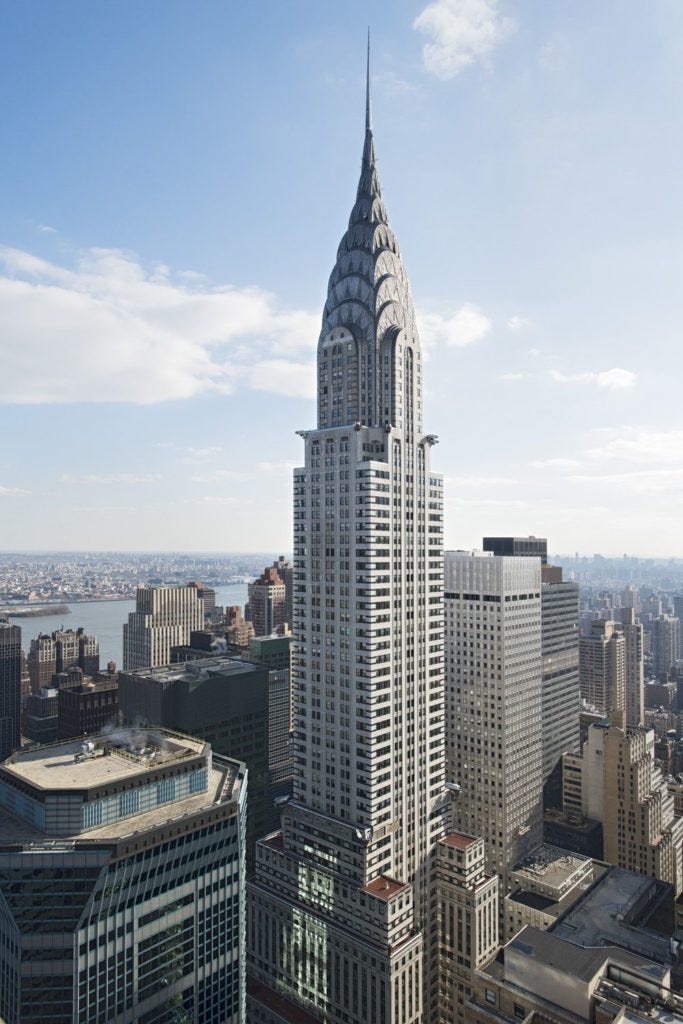
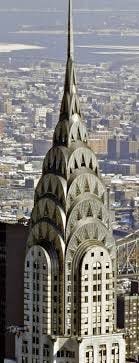


Griffith Observatory, Los Angeles
Built on land and with funds donated by Griffith J. Griffith in his will, Griffith Observatory’s aim was to make astronomy accessible to everyone; in keeping with this goal admission has been free to the public since its opening in 1935.
An Art Deco landmark made famous by many appearances in movies, the architecture has Greek, Roman and Moorish influences alongside numerous elaborate and geometrical Art Deco elements.
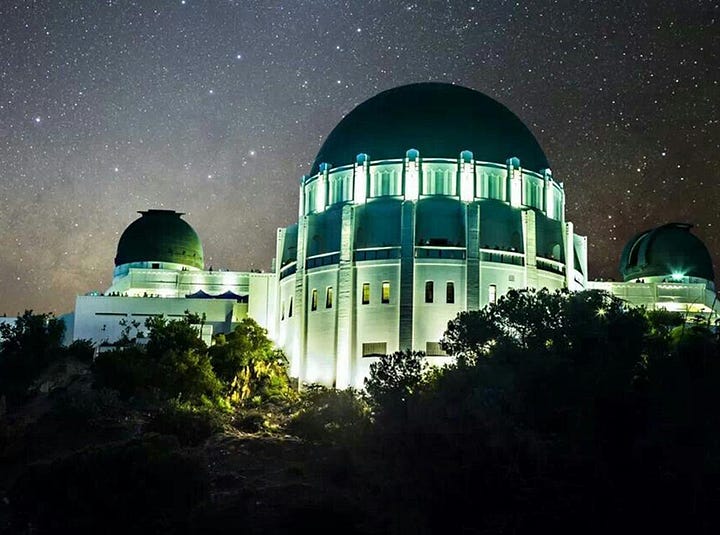
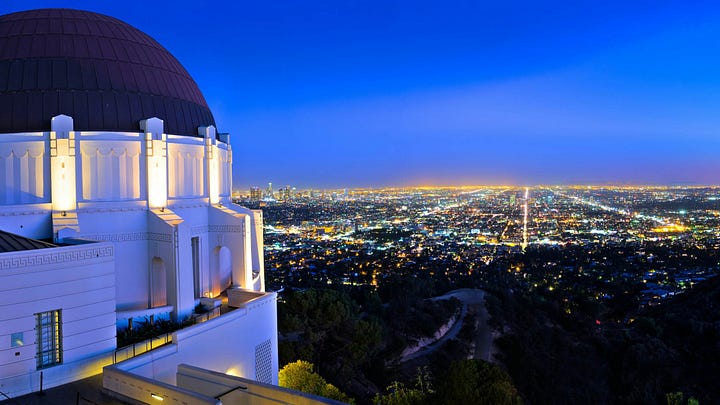
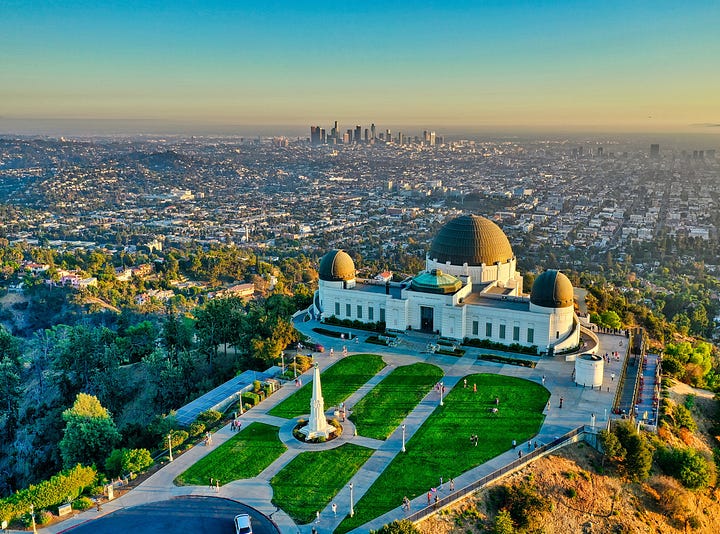
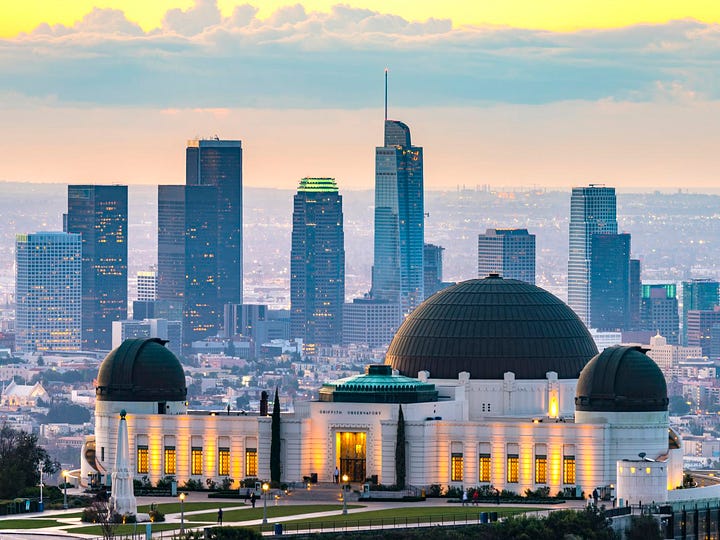
Empire State Building, New York
Possibly the most well known Art Deco building in the world, iconic component of New York’s famous skyline, the Empire State Building was the world’s tallest building from its completion in 1931 until 1970.
The Empire State Building features strong Art Deco motif’s, an iconic stepped silhouette and strong vertical lines which emphasise the building’s height, drawing the eyes upwards. The 200-foot spire at the top of the building was originally intended to act as a mooring mast for airships (prior to the Hindenburg disaster and subsequent collapse of the airship industry), it now serves as a broadcasting tower and observation deck.
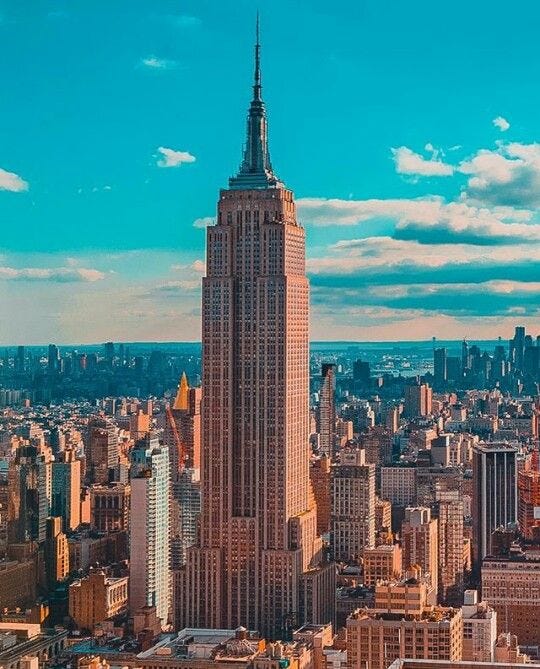
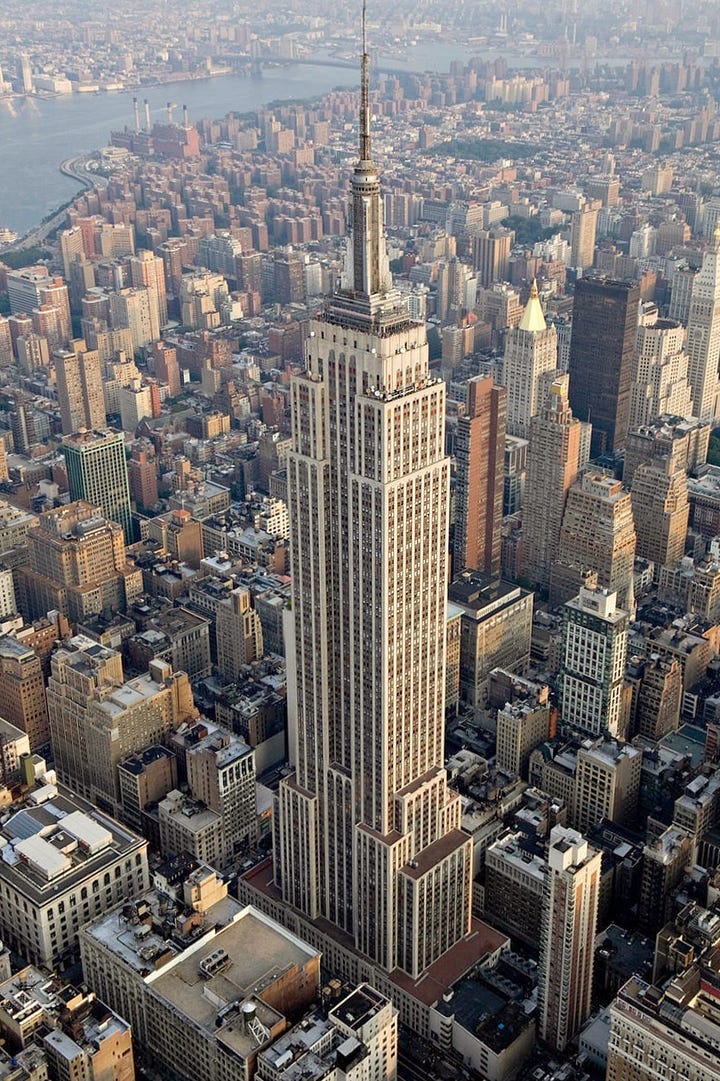
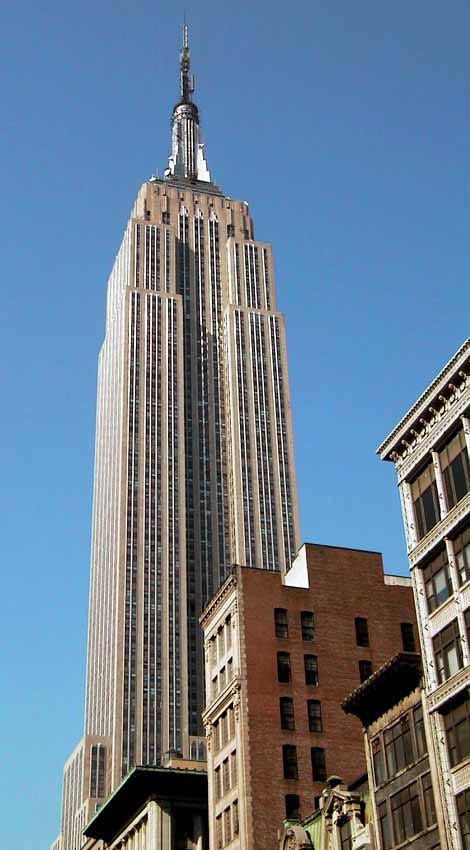

Palais de la Mediterranee, Nice
Created as a symbol of luxury and celebration between the wars in Nice, France, the Palais de la Mediterranee was a cultural centre, hosting many national and international art exhibitions and featuring a casino, theatre, restaurant and cocktail bar. The hotel closed in 1978 and, sadly, the majority of the building was demolished in 1990 with the exception of two facades which remain to this day. In 2004 the building was renovated into a luxury hotel.
The remaining facades were preserved as historical monuments and are elegantly decorated with horses and female figures, remnants of a past age.

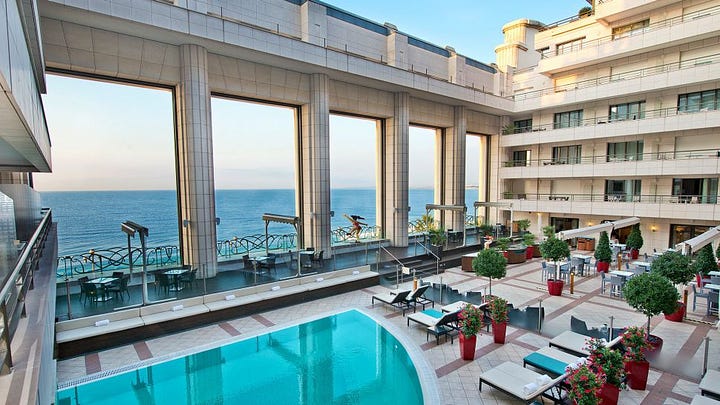
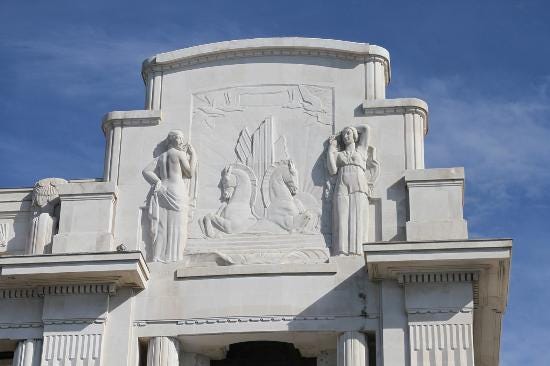
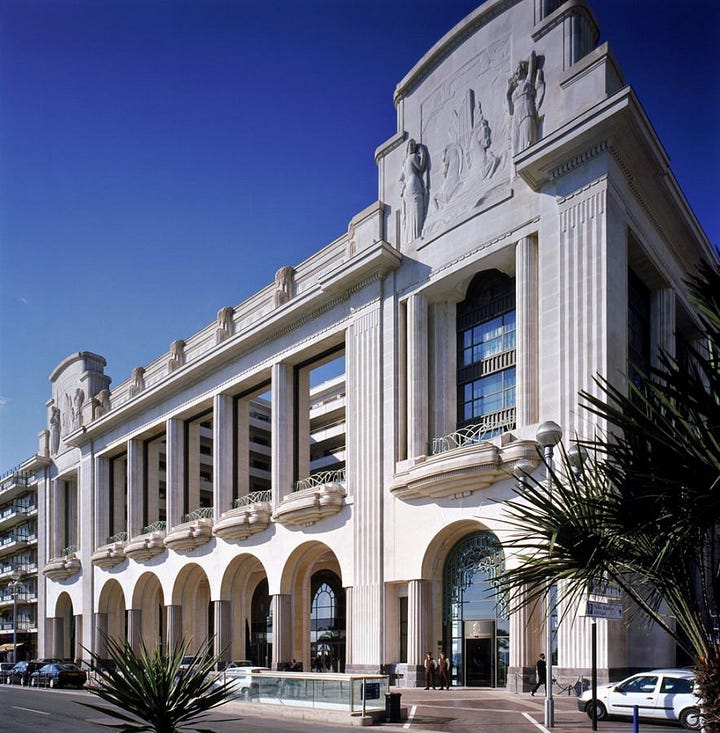
Paramount Theater, Oakland
Opened in December 1931, the Oakland Paramount Theater incorporates influences from Egyptian, Grec-Roman and Polynesian styles as well as zig-zag and floral Art Deco motif’s decorating the heavily embellished interior. When it opened it was the largest theater on the U.S. West Coast, seating 3,040 people.
After decades of neglect, the theater was purchased by the Oakland Symphony Orchestra Association in 1972 and lovingly restored. It continues to be the home of both the Oakland Symphony and the Oakland Ballet to this day and was designated a national historic landmark in 1977.

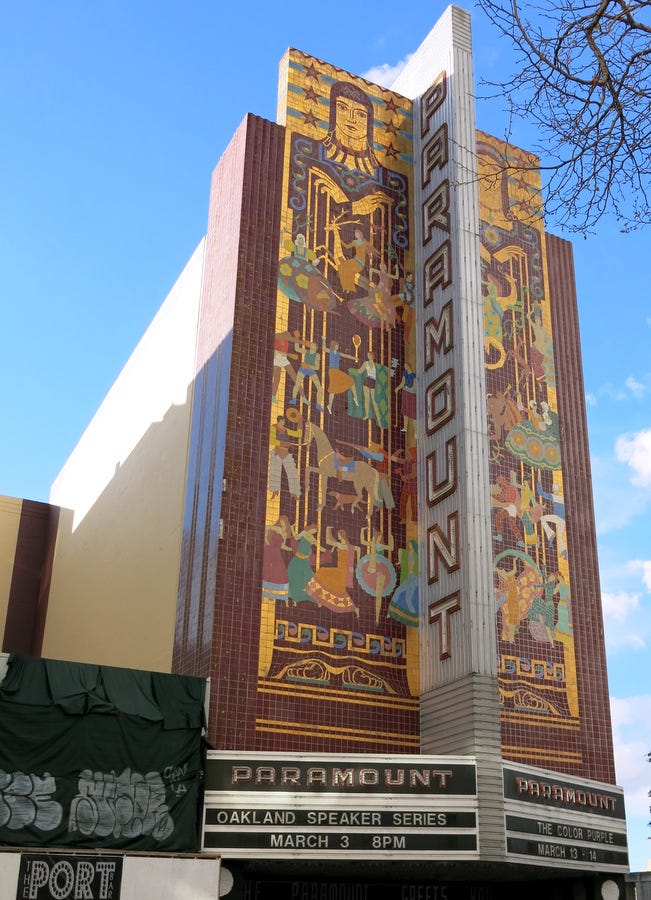
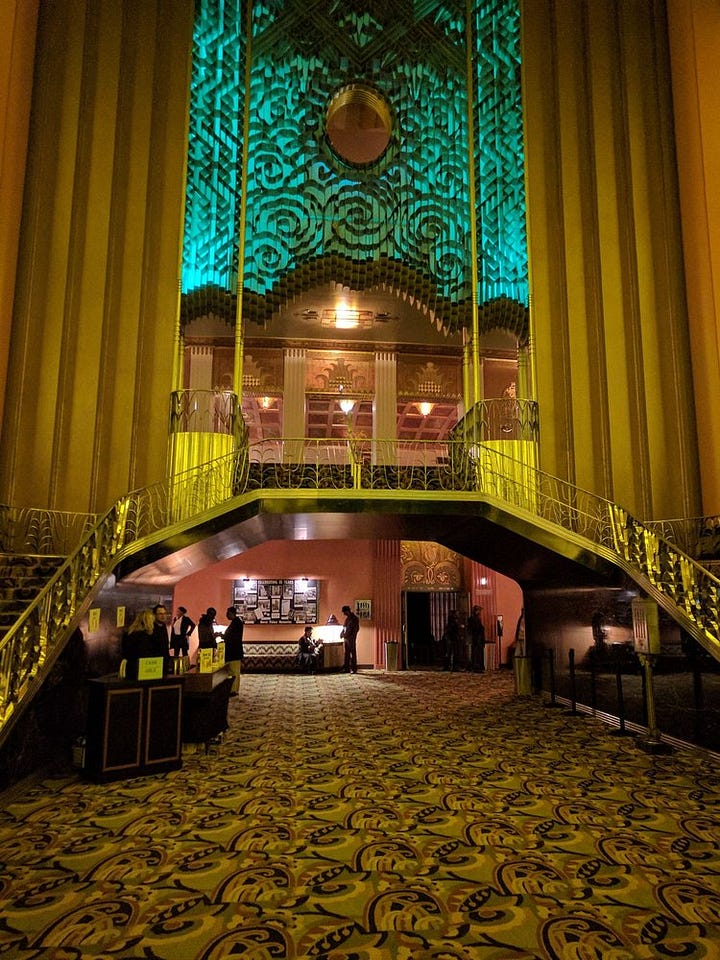
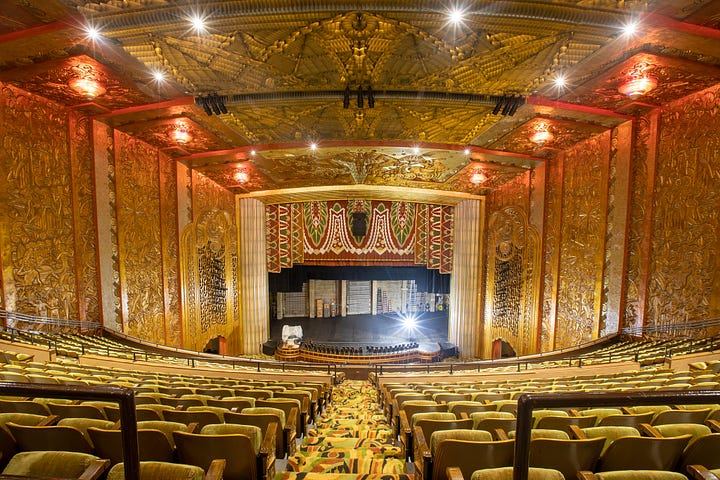
Hoover Building, London
Initially commissioned and opened in 1933 as the UK headquarters and a manufacturing plant for the Hoover company where it manufactured vacuum cleaners and, during World War II, aircraft parts.
The building was later opened as a supermarket in the 1990’s, making it perhaps one of the most stylishly designed supermarkets in history. The rear of the building remains a Tesco superstore whilst the main area of the building have since been converted into 66 beautiful Art Deco luxury apartments.
The building incorporates geometrical design, bright colours and Aztec and Mayan inspired Motifs.
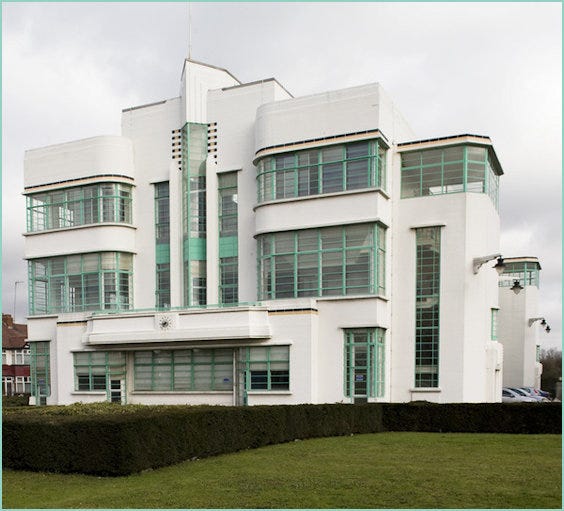
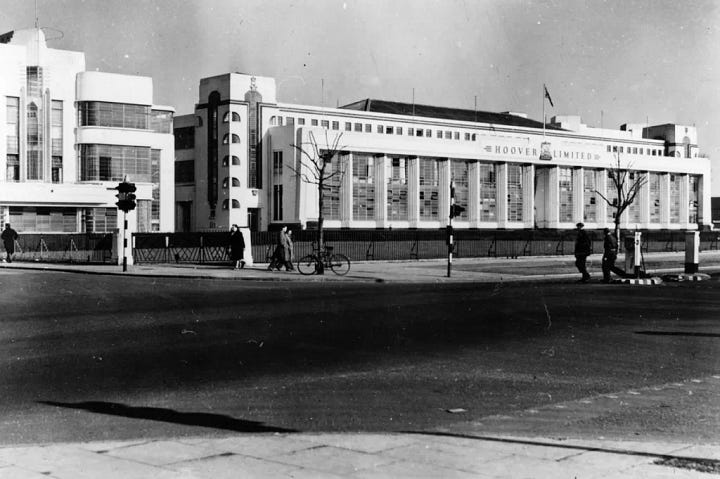
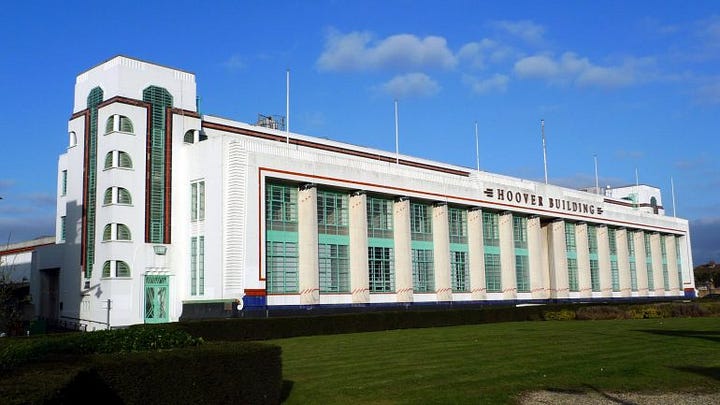
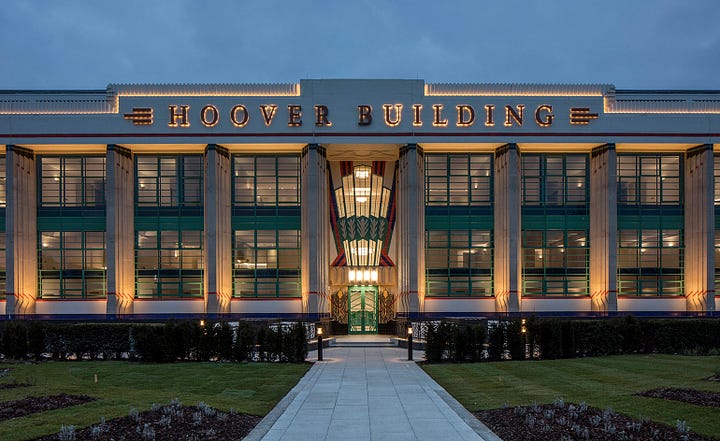
The Basilica of the Sacred Heart, Brussels
A rare example of a religious building in an Art Deco style, the imposing Basilica of the Sacred Heart in Brussels dominates the skyline. The foundation stone was laid in 1905 to commemorate the 75th anniversary of Belgian independence however construction was delayed by both world wars and wasn’t completed until 1970.
The fifth largest church in the world, the Basilica is considered a masterpiece of Art Deco architecture, featuring clean lines and geometric shapes, striking green-copper domes, and an interior finished with architectural embellishments, stain glass windows depicting the life of Jesus, and a number of sculptures and artworks by significant artists.
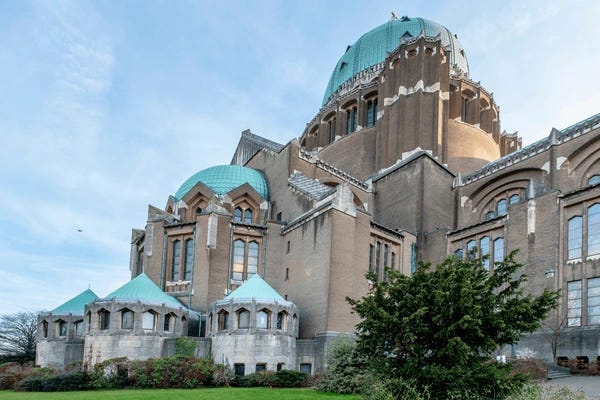

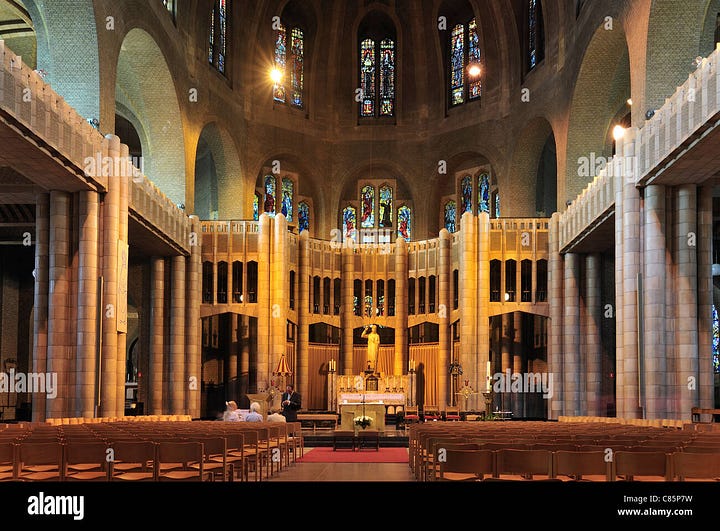
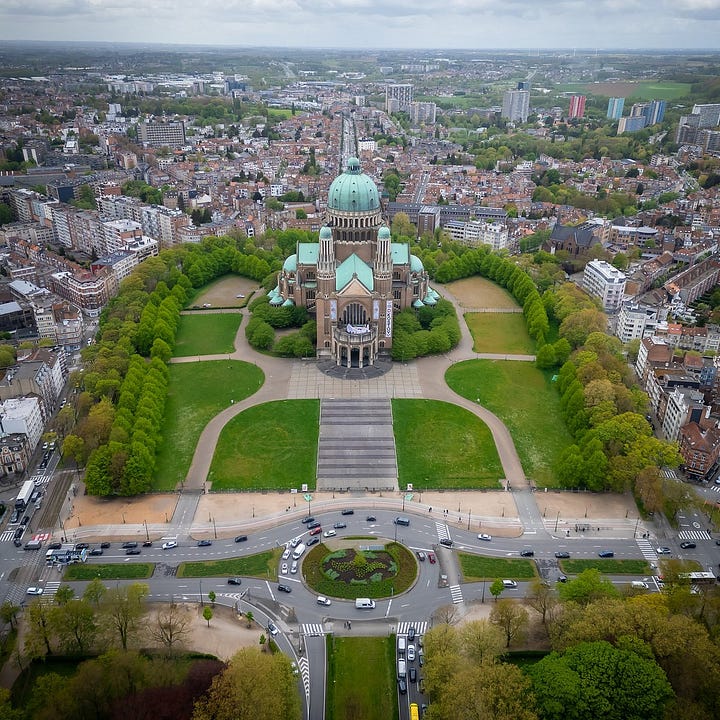
Eastern Columbia Building, Los Angeles
The Jewel of Downtown L.A., the Eastern Columbia Building is a beautiful example of Art Deco, built in 1930 after only 9 months of construction the building is striking; clad in glazed turquoise terra cotta tiles and accented with deep blue and gold detailing and copper-panels framing long vertical windows.
The decoration continues onto the street outside, with the sidewalks surrounding the building containing multi-coloured tiles in Art Deco zigzag and chevron patterns. The building is crowned with a large clock tower whose face glows at night, emblazoned with the name of the building “Eastern”.
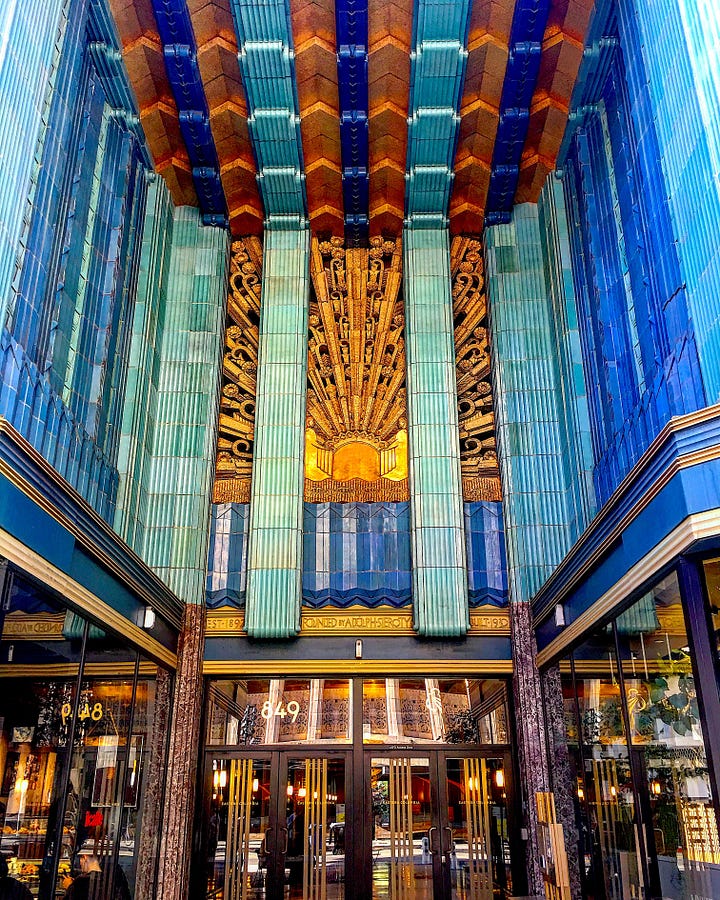
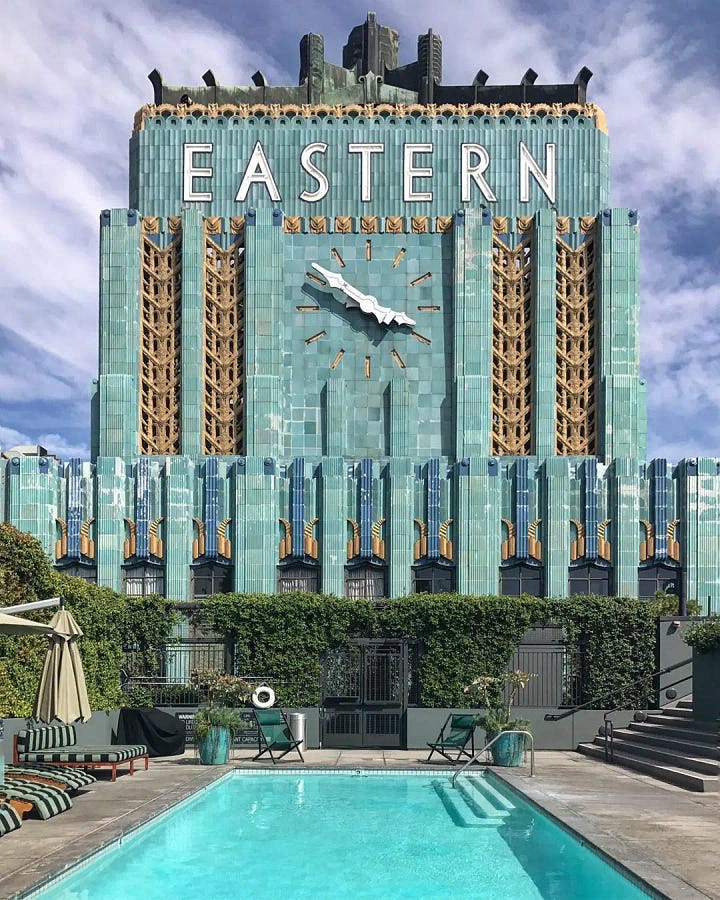
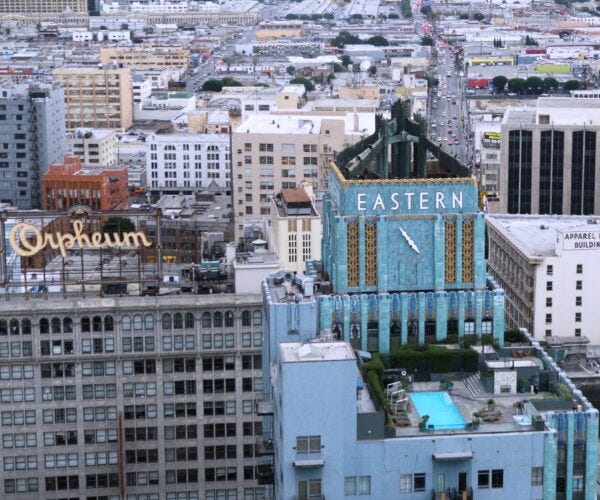
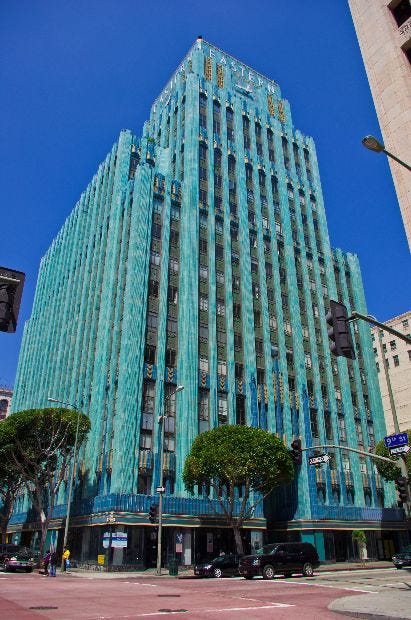
About Us
The High-Tech Creative, standing at the intersection of Art and Tech.
Publisher & Editor-in-chief: Nick Bronson
Fashion Correspondent: Trixie Bronson
AI Contributing Editor and Poetess-in-residence: Amy




